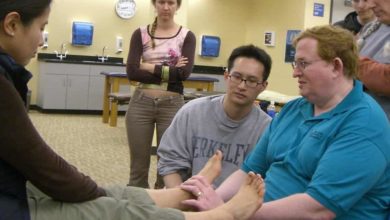USMLE and COMLEX Questions are unique. Utilize USMLE question banks to get familiar with how to read and respond to boards questions.
USMLE Step 1 and COMLEX Questions
USMLE and COMLEX Questions require a special way of thinking about then. You should utilize USMLE question banks to help you get familiar with how to read and understand boards questions.
Step 1 to Approaching a USMLE and COMLEX Questions
When I read a test question, the first thing I am looking at is, What are they really asking me? Which parts of this question stem are distractors, and which parts are sneaky inserts of key information? Which answer is close to being correct but not quite the right one? Some questions and answers are straightforward, and it is important not to overthink. Some questions are trickier than they appear, and it is important not to “under-think”- run through a complete analysis of the question even if it seems easy. You have to be smarter than the question writer.
Example USMLE Step 2 Question
Let’s look at this hypothetical question stem:
A 37 year old female presents to you with shortness of breath on exertion and a dry cough that have been getting worse for the past 6 months. She also has a history of heartburn for which she takes OTC omeprazole, and she states that her fingers turn blue when she goes out in the cold. She has a family history of hypothyroidism in her mother and pernicious anemia in her sister. On cardiac exam, there is a normal S1 and S2. The lungs sound clear. Her hands have a waxy complexion.
Imaging of the chest suggests interstitial lung disease. As part of your workup, you decide to draw blood and run labs. Which of the following antibodies would be most specific for her disease?
A) anti-centromere
B) Anti-DsDNA
C) Ant-Scl-70
D) RF
E) ANA
The disease is diffuse systemic sclerosis. The antibody most specific of these choices is C, Anti-Scl-70. Anti-centromere is seen in the limited cutaneous form of systemic sclerosis. What sets them apart in this question is the involvement of the lungs. CREST syndrome is very commonly asked about on boards. Students should learn to recognize the Calcinosis, Raynauds, Esophageal dysmotility, Sclerodactyly, and Telangiectasia. Many students would recognize these symptoms in the stem and assume CREST syndrome and thus scleroderma is the answer, leading them to choose A as the answer. The student who understands the details of the disease will look another level further and know that there is a different antibody in the diffuse form of the disease and choose C.
There are other aspects, as well. Do you know the difference between sensitivity and specificity? One answer might be the sensitive test, but the right one is the specific test.
I actually had a very similar question on my COMLEX Level 1 exam. I may have discussed some aspects with my friends after the exam, and they were fooled by the question. One of them actually thought that the question writers wouldn’t have been that crazy about the details. I believe that focusing on these types of details and thorough but efficient analysis of questions are what set high scorers apart from average scorers. Everybody should know the basic high-yield facts from First Aid, but not everybody is able to recognize when they are to call on the higher level of thinking. COMLEX classically offers answers for different levels of thinking. There is an answer that looks right if you took it to “X” level, “Y” level, and “Z” level. You have to know that you thought it through completely. This is what I hope to help my students learn to do at medschoolcoach.com.
If I Take the USMLE, What Score Do I Need To Be Competitive?
If you want to know what USMLE Step 2 score you need to match into the residency of your choice, use the USMLE Score Estimator below to find out.



